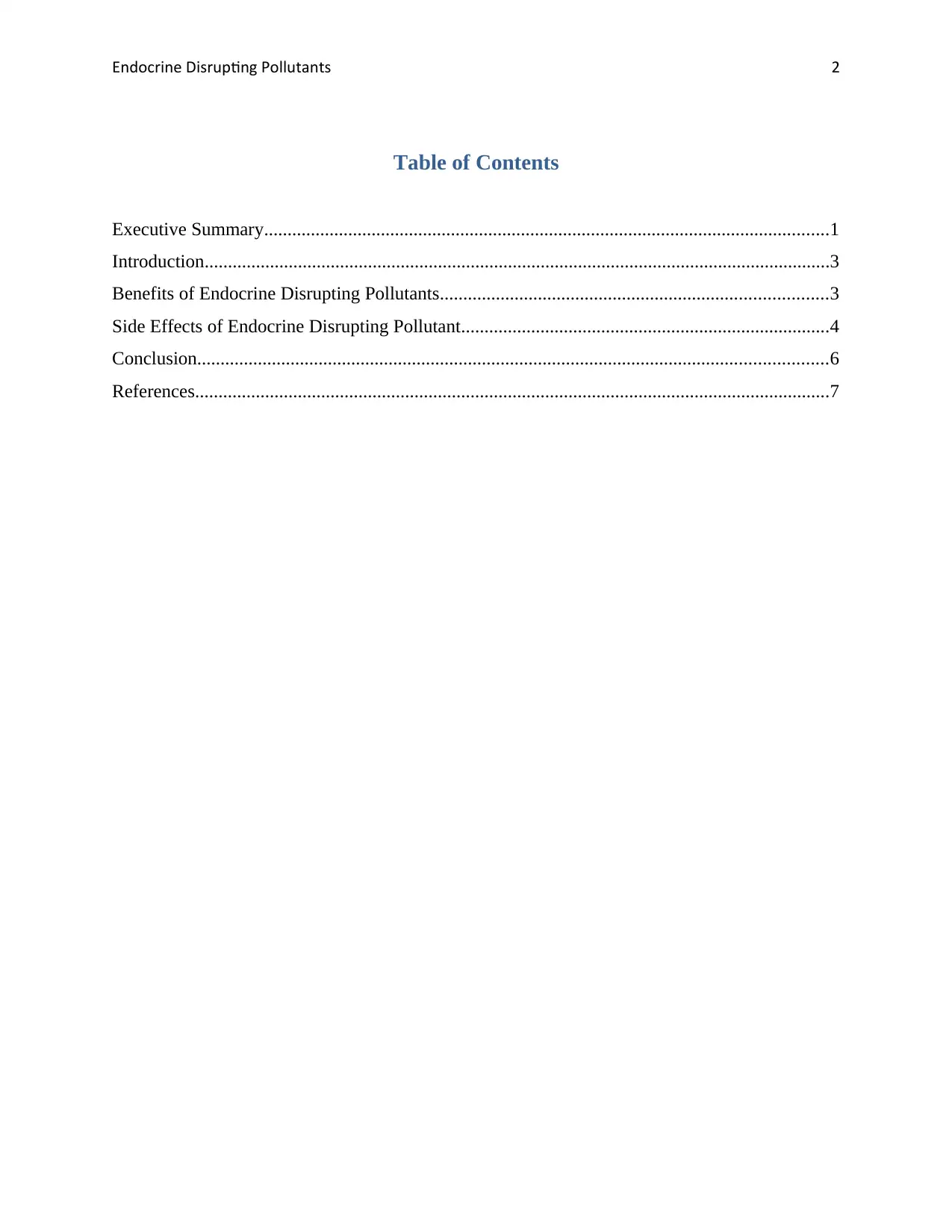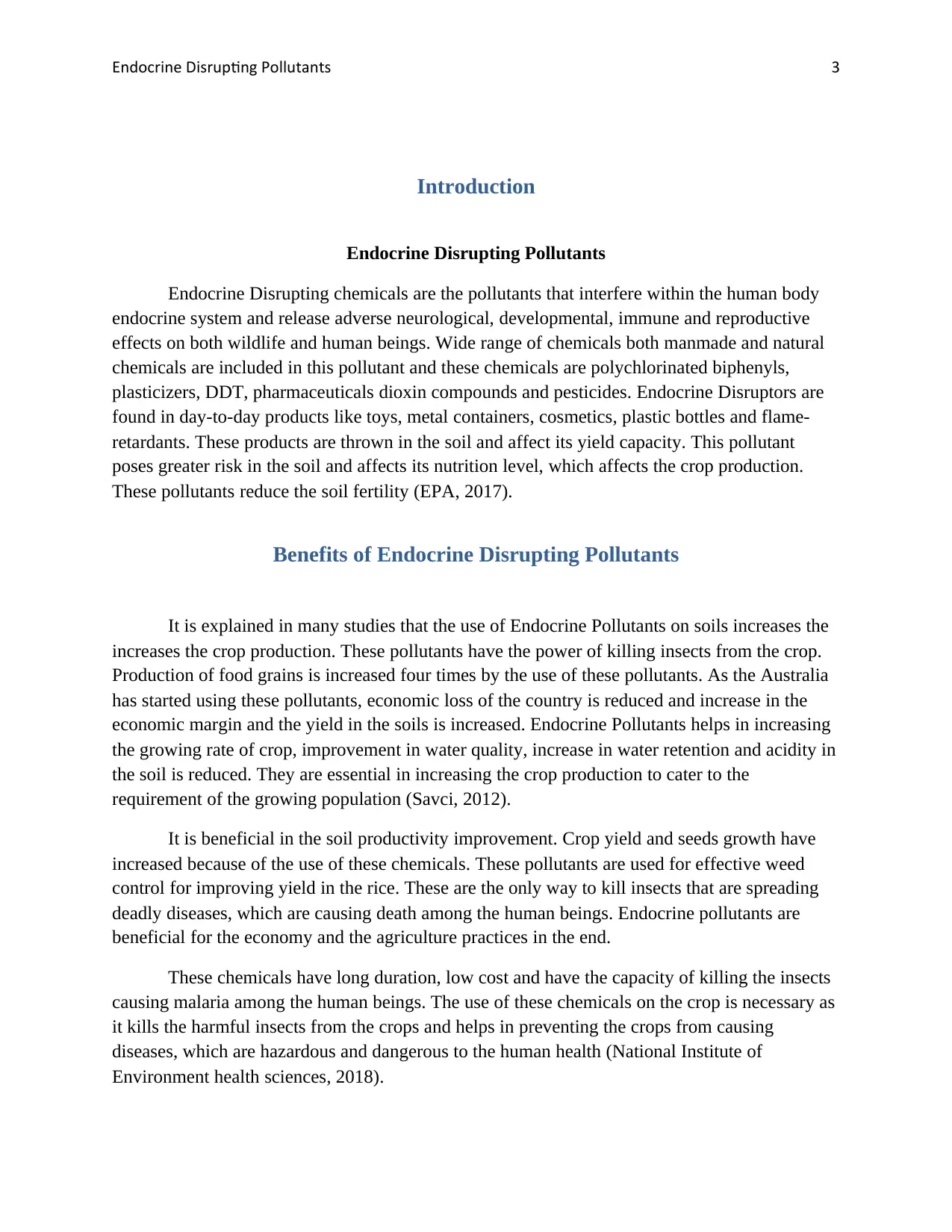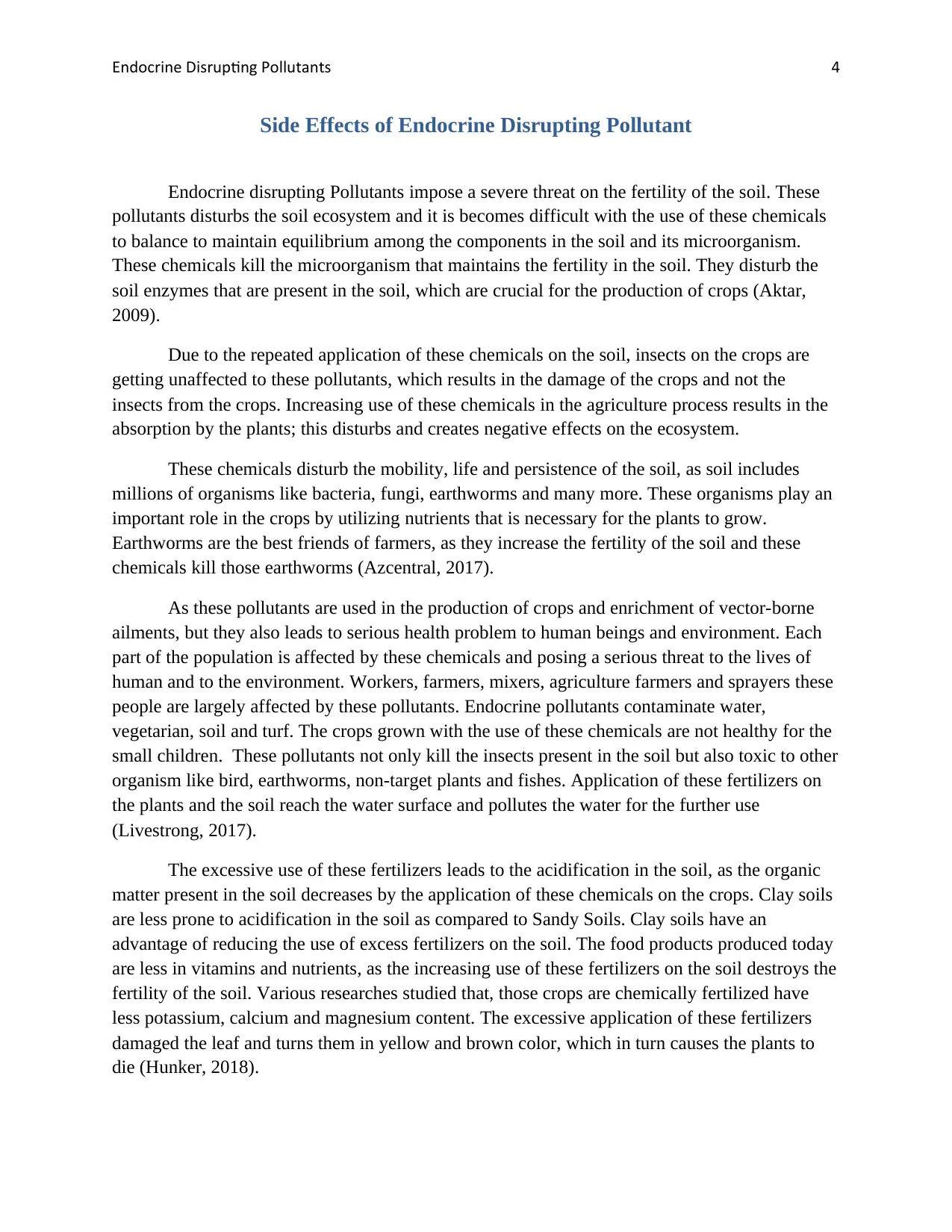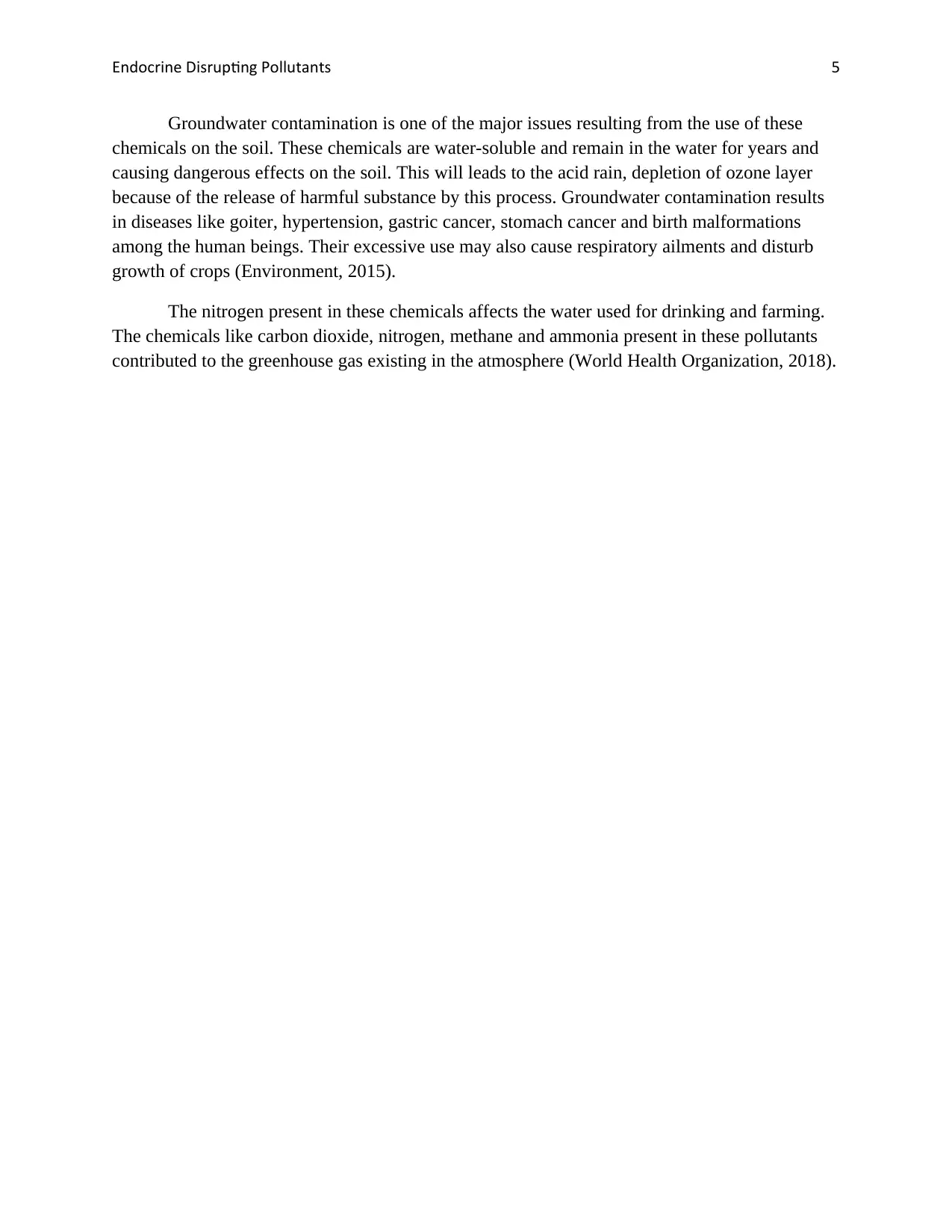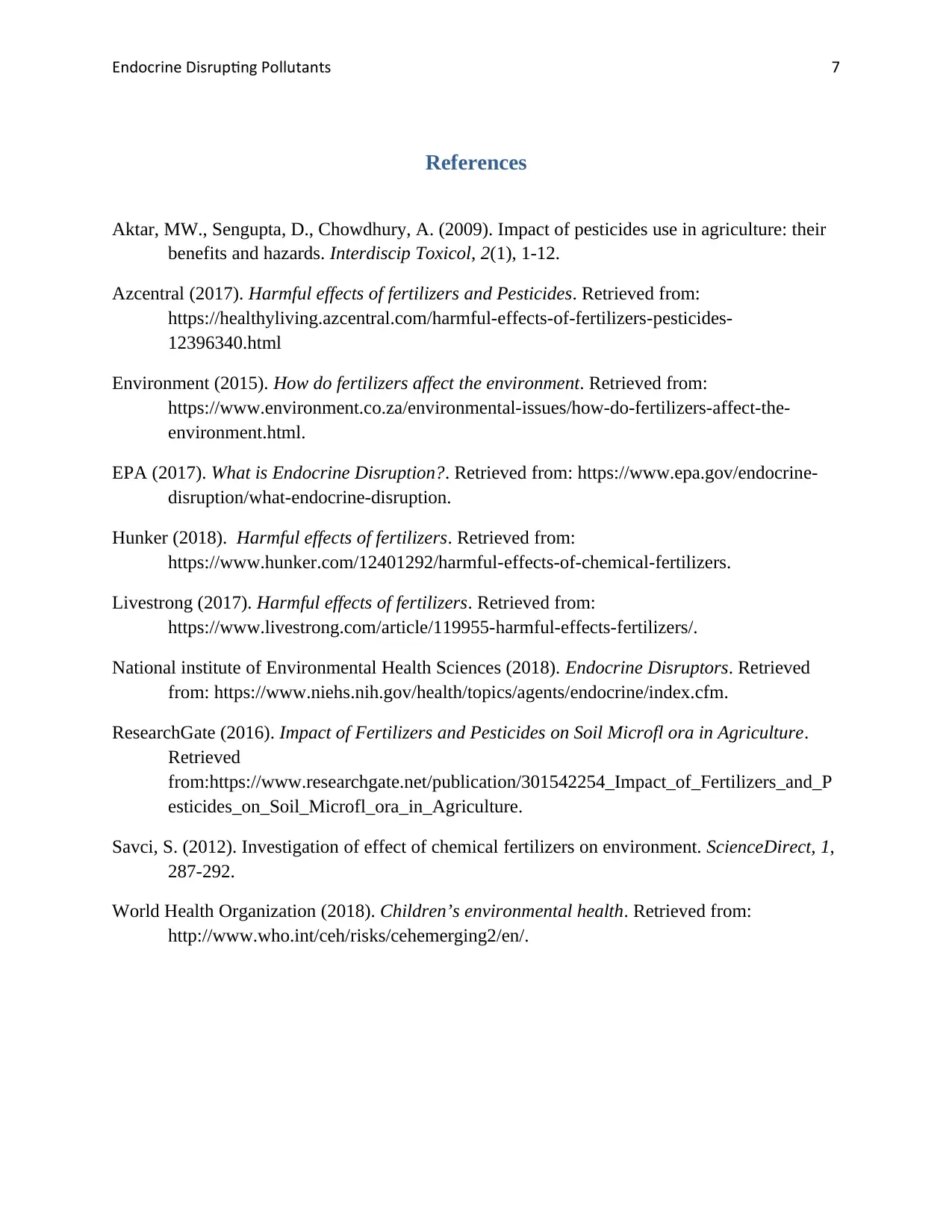This report discusses the benefits and side effects of Endocrine Disrupting Pollutants in the soil. These pollutants have a dangerous effect on human beings. They are both beneficial and non-beneficial for the soil. They increase the production of crops by destroying weeds and the insects present on the crops. This results in the speed growth of crops but disturbs the fertility of the soil. They are harmful to the health of farmers, sprayers and workers, as these people are involved in the process of crop production. These pollutants are causing disease among the human beings like cancer, hypertension, gastric cancer and birth malfunctions. The remains of these chemicals are thrown in the water bodies and make them polluted. These pollutants are the reason of the scarcity of fresh drinking water on the Earth. Ground Contamination and the soil Acidification are the major problem created by these chemicals. This report mainly focuses on the adverse effects of Endocrine Disrupting Pollutants.
![[object Object]](/_next/static/media/star-bottom.7253800d.svg)
![[object Object]](/_next/static/media/star-bottom.7253800d.svg)


